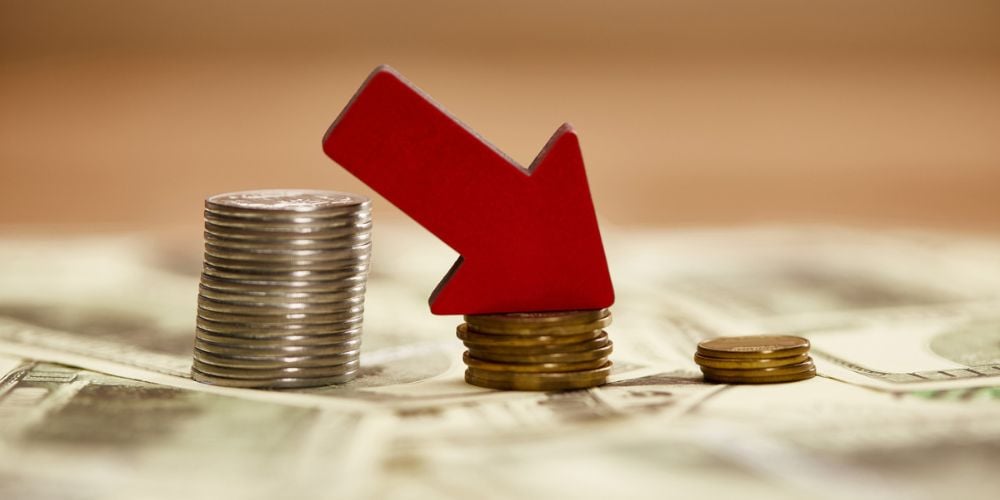Understanding the coexistence of inflation and unemployment requires a dive into basic economic indicators.
Typically, we see inflation as a rise in prices and unemployment as a lack of jobs. But can inflation and unemployment coexist?
This question takes us to the traditional economic model known as the Phillips Curve, which suggests a specific inverse relationship between the two.
Understanding Economic Indicators
Definition of Inflation
Inflation marks the rate at which the general level of prices for goods and services rises, eroding purchasing power.
Generally attributed to the demand-pull theory, cost-push theory, and built-in inflation, the causes of inflation vary from increased consumer spending to rising costs of production or wages.

Definition of Unemployment
Unemployment occurs when people who can work and want to work cannot find jobs. The impact it has on economic growth is profound.
Types of unemployment include structural unemployment caused by technological changes, cyclical unemployment resulting from economic recession, and frictional unemployment which is usually temporary.
The Phillips Curve: Traditional Model
The Phillips Curve represents an inverse relationship between the rates of unemployment and wage-driven inflation.
Historical data initially supported this view, suggesting that higher employment levels (low unemployment) could lead to higher prices. However, this relationship does not always hold as other factors play roles.
Deviations from the Phillips Curve
The concept of stagflation in the 1970s, where high inflation and high unemployment coexisted, challenged the traditional Phillips Curve.
This phenomenon prompted economists to rethink the simplistic view of the inflation-unemployment relationship.
Various global situations offer evidence that inflation and unemployment can indeed coexist, contrary to earlier economic predictions.
Can Inflation and Unemployment Coexist?
Several global factors lead to the simultaneous presence of inflation and unemployment:
- Globalization: Globalization often causes job displacement in industries that are unable to compete globally, leading to unemployment. Simultaneously, it can lead to inflation from increased demand for products.
- Technological Advancements: Rapid advancements can render certain skills and jobs obsolete, causing unemployment. This increased efficiency often leads to cost savings and can offset some inflationary pressures, but initially may cause higher prices due to investment costs.
- Government Policies: Fiscal policies, such as increase in government spending, and monetary policies, such as changing interest rates, can impact both inflation and unemployment directly.
- Supply Shocks: Events like oil price shocks can lead to higher costs for goods and services while also damaging economic sectors, leading to job losses.
Case Studies
Examining different nations reveals the complexity of the relations. For instance, the United States during the Great Recession faced high unemployment with relative inflation, different from the hyperinflation and extreme unemployment seen in Venezuela’s recent crisis.
Japan’s battle against deflation combined with low unemployment further complicates the narrative.
Theoretical Perspectives
Different economic theories provide various explanations:
- Keynesian Theory: This suggests that active government intervention is needed to manage the economy and can affect both inflation and unemployment.
- Monetarist Perspective: Pioneered by Milton Friedman, this view criticizes the Phillips Curve and suggests that long-term inflation expectations alter real-time economic outcomes.
- New Classical approach: Advocates for rational expectations theory where people anticipate the effects of economic policy on inflation which, in turn, influences unemployment.

Implications for Policy Makers
Understanding that inflation and unemployment can coexist is crucial for policy makers. It shifts the focus from managing one problem to a balanced approach that considers multiple facets of the economy.
Central banks, for instance, need to manage monetary policy to not only control inflation but also keep an eye on unemployment rates.
Frequently Asked Questions
What is stagflation?
Stagflation is the simultaneous occurrence of slow economic growth, high unemployment, and high inflation.
Are there current examples of countries experiencing both inflation and unemployment?
Countries like Venezuela have recently experienced this dual dilemma, largely due to political and economic turmoil.
How do government policies impact the relationship between inflation and unemployment?
Government policies, both fiscal and monetary, can alleviate or exacerbate the coexistence of inflation and unemployment by influencing demand and investing in job creation.
Can technological advancements lead to a permanent shift in the Phillips Curve?
Yes, rapid advancements in technology can influence the labor market and price stability, potentially leading to shifts in the Phillips Curve.
What are the long-term impacts of simultaneous high inflation and high unemployment on an economy?
Long-term effects include reduced consumer spending power, increased social unrest due to higher rates of unemployment, and more challenging economic management for policymakers.
Conclusion
The journey through economic indicators, theory, and real-world examples shows that inflation and unemployment can indeed occur simultaneously, challenging traditional economic beliefs.
This dual problem requires a nuanced approach to economic policy and further research for better understanding and prediction.
This comprehensive review sheds light on the complex dynamics between inflation and unemployment, providing a foundation for policymakers, economists, and students to consider broader economic interactions.


 Tags:
Tags:










